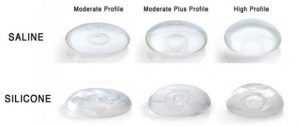Breast enlargement
Breast augmentation or breast enlargement is a surgical procedure to increase the size of the woman’s breasts by placing breast implants under the breast tissue or chest muscles. Some women feel that large breasts are more attractive than small or average size breasts. Their breasts did not develop to the desired size or they may have lost volume due to pregnancy, weight loss, or aging. For these women, breast augmentation may provide a more flattering, better-proportioned figure, expanded clothing options, and feelings of greater confidence and self-esteem.
How to choose a great surgeon?
In case you’re having breast enlargement, choosing a great and well-known surgeon plays an important role in getting the best result.
The first point that u need to pay attention is about using the internet so be careful when using the internet to look for doctors and clinics who provide breast enlargement. Some clinics may pay to advertise their services on search listings.
Check the surgeon is registered with the GMC (General Medical Council. They should be listed on the specialist register and have a license to practice.
Also, don’t forget to check if the surgeon is a “full member” on the specialist register for plastic surgery.
Always book an appointment to meet the surgeon before the procedure.
You may want to ask your surgeon:
- about their qualifications and experience
- how many breast enlargement operations they’ve performed
- how many operations they’ve performed where there have been complications
- about the type and manufacturer of the implant they use and why
- about the surgical technique used and the placement of the implants
- what sort of follow-up you should expect if things go wrong
- what their patient satisfaction rates are
What to expect
Breast augmentation is a type of surgery, so patients need to think carefully before opting for the procedure.
The implants may go under or over the pectoral muscle. Before surgery, the surgeon should help the patient choose the size of the implant needed. This may be done by putting different sized implants into a bra, to see how they feel. A general anesthetic is normally used so that the patient is asleep during surgery. Sometimes a local anesthetic is used, and the patient is awake.
Factors to Consider Before Undergoing Breast Augmentation
Breast augmentation is a surgical procedure with all the attendant operative and anesthetic risks. The procedure involves the use of an implantable medical device. Devices can fail and there are long-term considerations that arise with the presence of foreign material in the body. A discussion of these points is a key element of the consultation with the plastic surgeon before surgery. Several major factors to consider include:
- Statistics show that breast augmentation is not a one-time intervention. Women with implants can expect to need additional surgery over the years for problems such as shifting of the implant, leakage, and hardening scar around the implant.
- If an individual later decides to remove breast implants, the breasts do not revert to their appearance before surgery. The tissue is stretched when an implant is placed under it and may appear flat and droopy when the implant is removed.
- Persons with health conditions that impair wound healing or immunologic diseases that diminish the ability to combat infection should be cautious about obtaining an implanted material.
- Individuals who are emotionally vulnerable and find it difficult to handle set-backs should consider that breast augmentation carries the burden of dealing with an implant that is not a lifetime device. The potential for complications over the long term is a psychological burdensome may not wish to assume.
- Breast augmentation is cosmetic surgery and its costs are not covered by health insurance. Significantly, later costs associated with breast implants such as medical care, additional operations, and special studies to check for implant integrity may not be covered by health insurance.
What kind of breast implant should I choose?
- Based on your own needs the surgeon will consultant also discuss and advise you on what implant might be best to use
- All implants are made of an outer layer (shell) of silicone
- They can be filled with silicone, saltwater (saline) or both
- The silicone used to fill the implant can be in the form of a liquid or gel (cohesive silicone)
- Liquid silicone and saline implants give a softer and more natural feel
- Cohesive silicone implants give a firmer feel and can come in more shapes
- Liquid implants with a simple round shape often give as good results as shaped cohesive-gel implants
Risks and complications
Every surgical procedure has risks. Among patients who undergo breast reconstruction,46 percent of women with silicone gel implants and 21 percent of those with saline implants had at least one additional operation within 3 years. Eight percent of women with saline implants and 25 percent of those with silicone implants had surgery to remove the devices. Nearly 50 percent of those having cosmetic breast augmentation experience some kind of complication, for example, pain, hardening, infection, or the need for additional surgery. Some of the risks and complications associated with breast augmentation are:
As with any surgery, there are risks.
- Painful breasts
- Infection
- Sensation in the breast, the nipples, or both, may change temporarily
- Rupturing or leaking of the implant
- Bleeding
- Fluid accumulation
Capsular contracture refers to a hardening of the area around the implant. It can distort the shape of the implant, and it can cause pain.
The scars may become red, thick, and painful. Sometimes they require further surgery.
Recovery
You should be able to move around soon after having breast enlargement surgery.
It can take a few weeks to fully recover from surgery, so you should take a week or 2 off work. You should not drive for at least 1 week.
Some surgeons recommend wearing a sports bra 24 hours a day for up to 3 months after breast surgery (check with your surgeon).
Avoid heavy lifting or strenuous exercise for at least a month.
After 1 or 2 weeks: Your stitches will be removed (unless you had dissolvable stitches).
After 6 weeks: You should be able to return to most of your normal activities. Your scars should also start to fade.
After a few months: Your breasts should start to look and feel more natural. You may be able to stop wearing your sports bra.
It’s safe to sunbathe and fly if you have breast implants.







Leave a Reply
Want to join the discussion?Feel free to contribute!